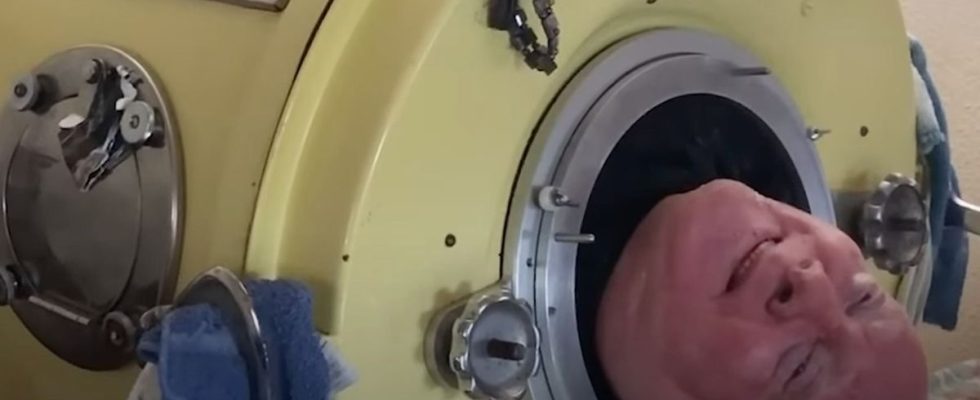Published on
Updated
Reading 2 min.
After spending seven decades in an “iron lung”, helping him breathe, American Paul Alexander died.
It’s an unusual story. After contracting polio as a child, Paul Alexander lived his entire life in an “iron lung”, a device that replaced his failing lungs. He died this Wednesday, at the age of 78.
A source of inspiration “for millions of people”
Paul’s brother, Philip Alexander, announced the news on Facebook.
Paul”has touched and been a source of inspiration for millions of people”, he confided, with a heavy heart.
The origin of the death of “the man in an iron lung” has however not been revealed, although Covid-19 is one of the avenues mentioned.
As a reminder, Paul Alexander had been suffering from poliomyelitis since the age of 6. An extremely infectious viral disease, which left him paralyzed from the neck down.
Result: the man was never able to leave this metal box – a sort of chamber using pumps which allowed him to breathe – with only a head cushion for support.
“I couldn’t speak. I couldn’t breathe. I couldn’t swallow. Polio had taken everything from me, literally everything“, he explained in a podcast.
Paul Alexander became a lawyer
Despite this handicap, Paul Alexander decided to believe in his dreams: he managed to obtain a law degree and become a lawyer. The man had also written a book.
In November 2022, a fundraiser was launched on the GoFundMe site to help the old man pay his health costs.
“I am so grateful to everyone who donated to my brother’s fundraiser. This allowed him to live his last years without stress. It will also help pay for his funeral during this difficult time.“, confided Paul’s brother, Philip.
Although the machine helped the old man survive, it is now almost no longer used, says the WHO.
“It has today been replaced by the insufflation of air into the respiratory tract via cannulas inserted into the trachea artery, connected to very sophisticated devices called ventilators, which make it possible to adjust, with great precision, the characteristics of respiratory assistance“, relates the Association of the Regional Hospital Museum of Lille.
